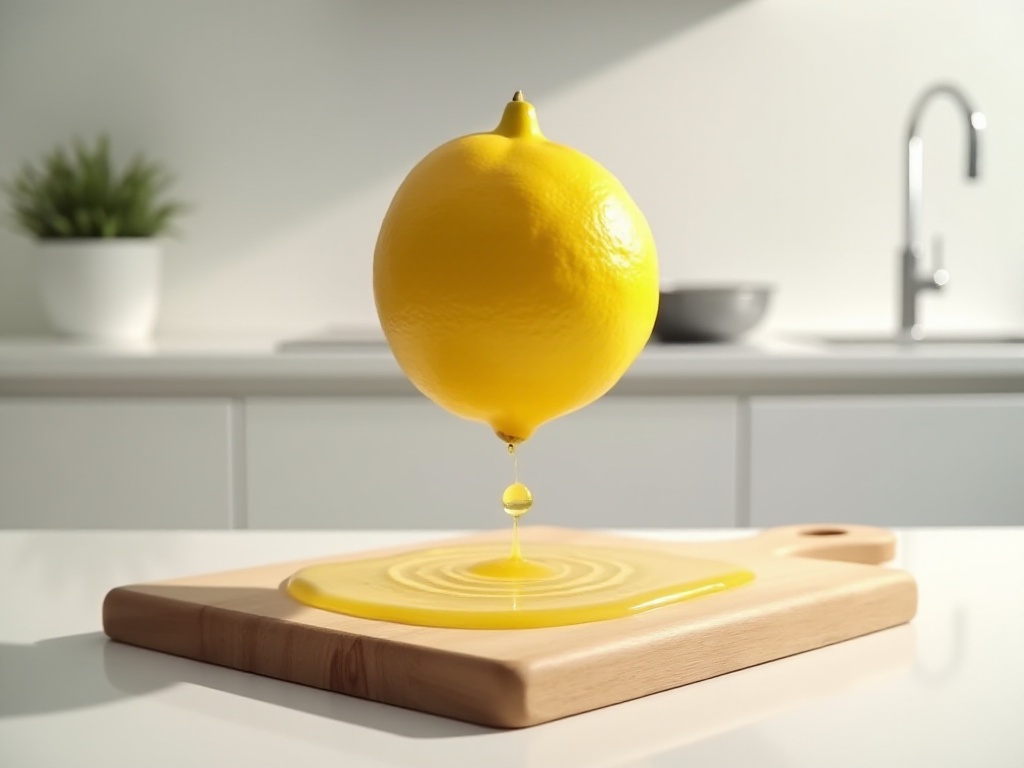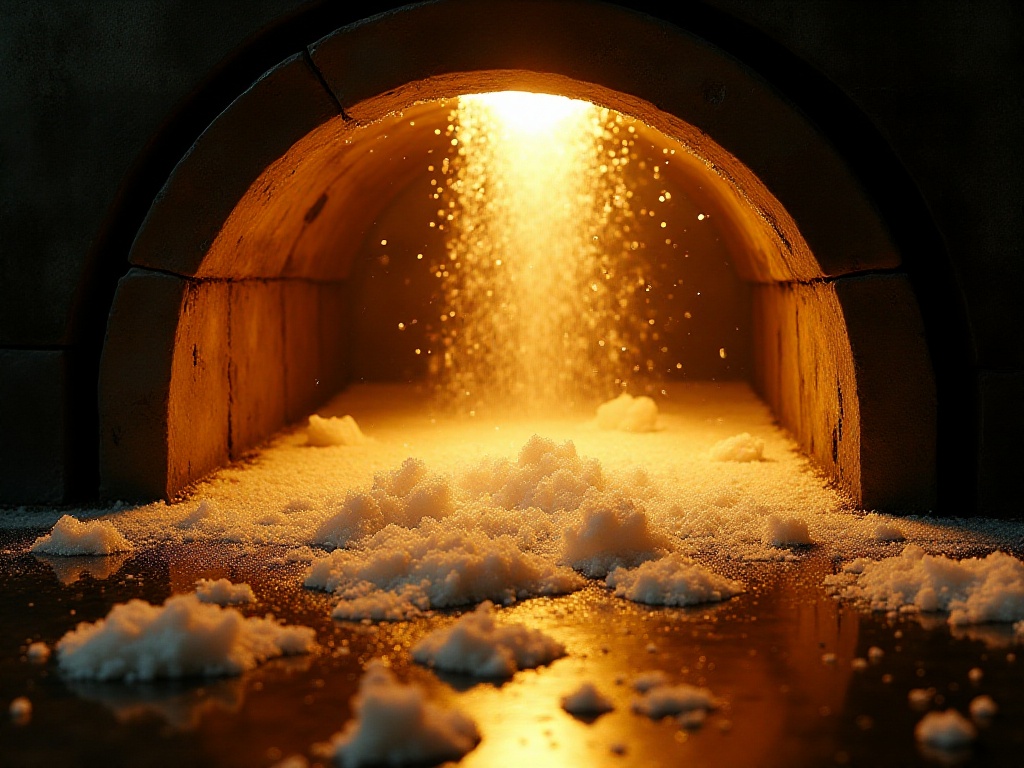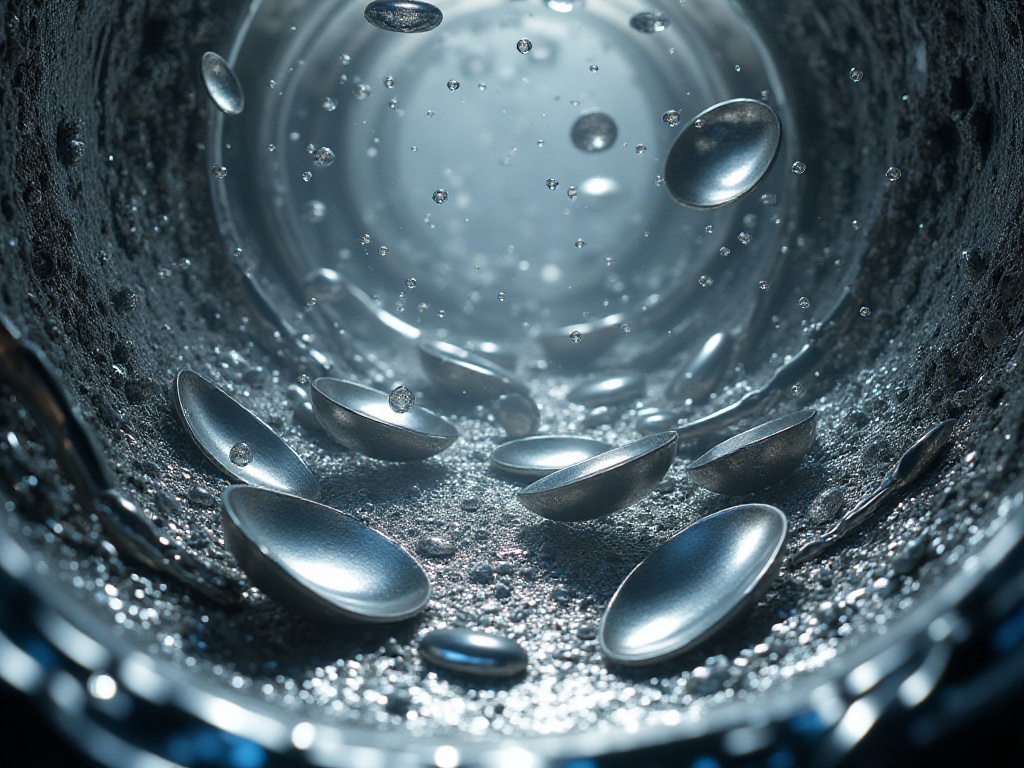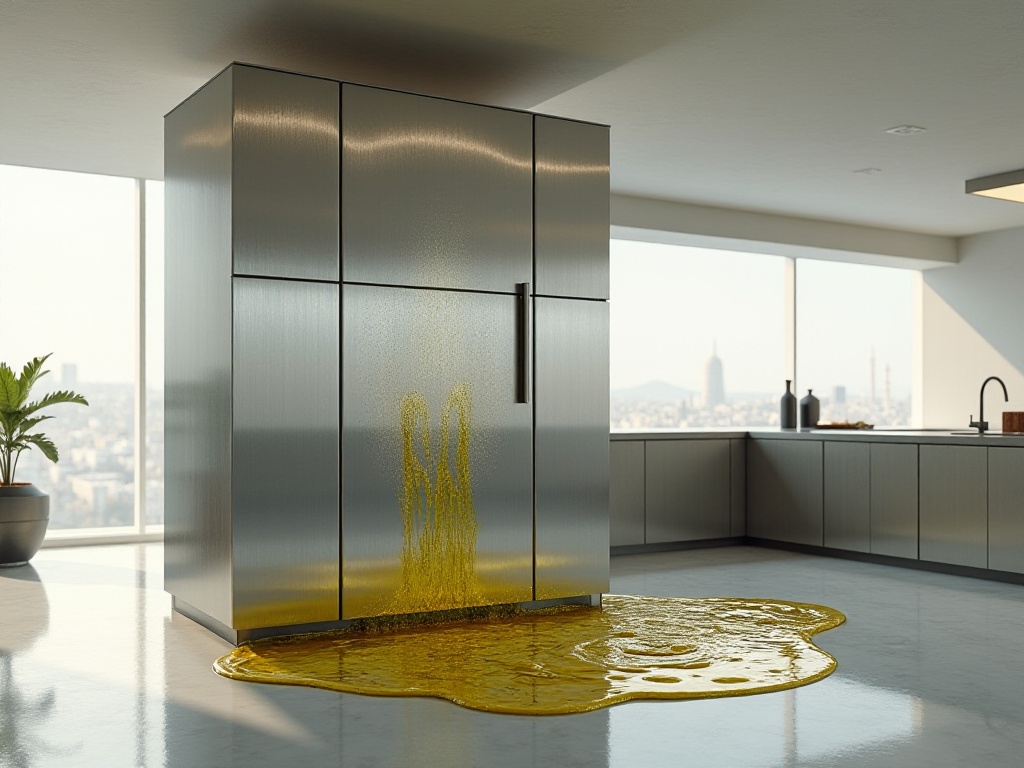Source of Inspiration
As a young working professional who just moved out on my own, I deeply understand the challenges of living alone. Recently while cooking, I noticed an unpleasant odor in my microwave, especially after heating curry and spicy hot pot. To be honest, I had tried many cleaning methods - kitchen cleaners, disinfectant wipes, and even specialized microwave cleaning sprays, but none worked well.
Then one day, while cleaning the kitchen and taking out trash, I found some nearly spoiled lemons in my fruit basket. These lemons were brought by friends for cocktails during their visit last weekend, but we got caught up in gaming and completely forgot about them. Looking at these lemons, I suddenly remembered seeing a cleaning hack using lemons while scrolling through Xiaohongshu recently. Since these lemons were about to go bad anyway, why not use them for a deep microwave cleaning!
Experimental Process
To make this cleaning experiment more meaningful, I decided to document the entire process, thinking I might share it in a post later. First, I found the largest glass bowl in my house - one my mom insisted on giving me, worried I'd go hungry living alone. I cut the freshest lemon in half and added about 300ml of warm water, just hot enough that I could touch it.
Before putting the bowl in the microwave, I took a photo with my phone for a before-and-after comparison. Honestly, I was worried this method might be too simple and ineffective. However, what happened next truly surprised me.
I set the microwave to maximum power for 3 minutes. After just 30 seconds, things started happening inside. Through the glass door, I could see bubbles forming in the water, with wisps of white steam slowly rising. After about a minute, the entire microwave door was covered in condensation, like breath on a winter day. Most amazingly, the unpleasant mixed odors in the microwave were gradually replaced by a fresh citrus fragrance.
When the microwave dinged, my kitchen was completely filled with lemon scent. I had to be careful opening the door because the steam was really hot. After waiting a bit, I used the cloth that had failed to clean properly many times before to gently wipe the microwave's interior. I couldn't believe it - those stubborn grease stains came off easily! Especially the yellow stains on the top and sides that used to make my arms sore from scrubbing - they just wiped right off this time.

Scientific Principles
Given how amazing this cleaning method is, I felt it necessary to research the scientific principles behind it. After looking up some information online, I found the science behind it quite interesting.
First is the effect of steam. When water is heated near its boiling point, it produces a lot of steam. This steam moves around in the enclosed microwave space and condenses when it hits cold surfaces. This process isn't just simple water vapor condensation - more importantly, the high-temperature steam penetrates into the crevices of the stains, essentially giving the stubborn grime a "steam sauna." This softens the hardened grease, making it easier to remove.
The lemon's role is even more fascinating. Lemons contain about 6-8% citric acid, a natural organic acid. Citric acid not only breaks down grease but also has good antibacterial properties. The research I found shows that the citric acid in lemons can effectively break down over 90% of greasy stains. Additionally, lemons contain natural essential oils, which explains the fresh fragrance during the cleaning process.
Interestingly, lemon's cleaning power was discovered in ancient times. It's said that in ancient Rome, people already used lemons to clean metal vessels and remove stains. Looking at it this way, my method is really an "ancient technique with modern application"!

Extended Applications
This successful experience made me wonder - if this method works so well on microwaves, could it work on other kitchen appliances too?
Sure enough, in the following days, I tried this method on other appliances. For example, my rice cooker often had a hard-to-clean rice residue at the bottom from cooking porridge. I put some warm water and lemon slices in it, ran it on "keep warm" for 5 minutes, and those rice stains became much easier to clean.
Scale buildup in my electric kettle had also been bothering me for a long time, leaving white floating particles in my cups. After treating it with this lemon water method once, the scale noticeably decreased. However, I also learned some important points while using this method. For instance, the water temperature really shouldn't be too high - one time I was in a hurry and used nearly boiling water, which created so much steam it almost turned my kitchen into a sauna. Also, it's essential to open windows for ventilation after cleaning, or water droplets might form on walls and cabinets.
I also found this method particularly effective for cleaning range hood filters. I used to just soak them in dish soap, but it never felt clean enough. Later, I tried soaking them in warm lemon water for 20 minutes before rinsing with clean water, and the results were surprisingly good.

Cost-Effectiveness
Speaking of costs, this might be the most appealing aspect of this cleaning method. As a young professional who just started working, I'm particularly conscious about value for money.
I did the math: a lemon costs about 2-3 yuan at the fruit store, and might be even cheaper at the supermarket. Each cleaning only requires half to one lemon, so one cleaning session costs just 1-2 yuan. Plus, the used lemon can be thrown into the garbage disposal to deodorize the drain - truly multipurpose.
In comparison, the imported microwave cleaner I bought online cost 59 yuan per bottle and only lasted two uses. More importantly, those chemical cleaners have a harsh smell, and you have to wipe repeatedly after use, worried about residues affecting your health.
Experimental Conclusion
Through this cleaning experiment, I feel I've mastered another life skill. Here are the main takeaways:
First, lemon selection is important. Fresh lemons not only clean better but also emit a more natural fragrance. If using lemons that have been stored for a while, choose ones that still look smooth and feel firm.
Second is temperature control. After multiple attempts, I found that water temperature around 60-70 degrees Celsius works best. This temperature fully activates the lemon's cleaning properties without producing too much steam. Specifically, let boiled water cool until you can just put your finger in it.
Then there's timing. Different microwave wattages require different heating times. Mine is 800 watts, and 3 minutes is perfect. For higher-powered microwaves, 2 minutes might be enough. I suggest starting with 2 minutes on your first try and adjusting based on results.
Finally, and very importantly, is post-cleaning treatment. Immediately wipe the microwave interior dry with a clean cloth after cleaning, or remaining moisture might lead to bacterial growth. It's also best to open kitchen windows for ventilation to quickly remove excess moisture.
Reader Interaction
Through this experiment, I've discovered there's a lot of wisdom waiting to be discovered in daily life. I'm curious about how you usually clean your microwave. Do you use specialized cleaners, or do you have your own unique tricks?
For example, a colleague told me she always uses white vinegar to clean kitchen appliances with good results. Others say you can dry lemon slices and put them in the microwave with baking soda for continuous freshness.
If you've tried similar natural cleaning methods, please share in the comments. Your experience might help more young people like me. After all, with more young people living alone these days, having practical household skills is really important.
Future Outlook
This cleaning experiment has given me a new perspective on home life. Young people today are increasingly focused on health and environmental protection, so simple, harmless cleaning methods like this should become more popular.
I'm already planning to try more natural cleaning methods. For instance, I've heard that vinegar and baking soda combinations are also amazing for unclogging drains; mint leaves soaked in water can repel mosquitoes; and dried tea leaves can remove formaldehyde and odors. These are all directions I want to explore next.

Additional Notes
Through continued practice, I've discovered some interesting alternatives. For instance, if you don't have fresh lemons on hand, white vinegar is indeed a good substitute. I tried using a ratio of 4 parts warm water to 1 part white vinegar, and while the smell might not be as fresh as lemon, the cleaning effect is just as good.
More interestingly, I found that pomelo peel has a similar effect. Every time I eat a pomelo, I save the peel, cut it into small pieces, and heat it in the microwave for a minute. It not only removes odors but fills the entire kitchen with a fruity fragrance.

Precautions
Although this cleaning method is simple, there are some details that need special attention. First, you must use heat-resistant glass containers, as ordinary plastic bowls might deform from the high temperature.
Second, be mindful of the water amount - I recommend not exceeding two-thirds of the container, as the water will bubble vigorously when boiling and might overflow.
Heating time should also be adjusted according to your microwave's power. Like my 800-watt microwave, 2-3 minutes is usually enough. For your first try, it's best to watch nearby, and immediately stop heating if you notice water about to overflow or any other unusual situations.

Method Improvements
After repeated practice over time, I've discovered some new tips. For example, adding a pinch of baking soda to the water not only enhances cleaning effectiveness but also neutralizes stubborn odors. I tried placing a few lemon slices directly on the microwave turntable after cleaning, which helps the fresh scent last longer.
It's also best to clean immediately after using the microwave. The stains are fresher then and easier to remove. For stains that have dried for a long time, you might need to repeat the cleaning process several times for complete removal.
These are experiences I've gathered through daily use. Honestly, since starting to live alone, I've discovered there are so many details in life that need learning. But solving each small problem gives me a great sense of achievement.
If you're also trying this method, please share your experience. You might discover more interesting improvements. After all, life is about getting better through constant trial and improvement. Everyone's experience is unique, and through sharing and communication, we can all learn new things.








